Every watch starts somewhere: with a designer and a blank page before them. We’ve all been there, whether it is starting to write that ever elusive novel, finally doing that painting you’ve wanted to do for years, designing a new kitchen (or even starting your own watch-based website!) … taking that first step is frequently one of the hardest hurdles to overcome in bringing any vision to life.
This becomes even more difficult when your canvas is normally no bigger than 5cm in diameter, and in a market with many hundreds of thousands of unique designs already in existence. However, watch designers continue to bring us some truly incredible timepieces which bring to life a distinctive vision in a new way. In this post, we wanted to explore what inspires watch design, looking at some designs which have stood the test of time, some more contemporary timepieces, and more importantly to explore what kinds of things can be demonstrable as having inspired specific timepieces across the years.
Who knows, something you read here might spark an idea for you…
What Inspires Watch Designs?
Firstly, let’s take a step back and look at how products – any products – are designed. How can designers just… innovate? Can we foster innovation, per se? Well, whilst it might be true that we cannot just force specific ideas to spontaneously appear, we can certainly help ourselves with a creative environment, a creative process, and ensure we are in the right mindset for said process. A great example of how this can work was aired in 1999 by ABC News, showcasing a US company called IDEO innovating a completely new design of something simple and everyday: a trolley, or shopping cart. Taking a number of individuals from different backgrounds, with a “no idea is a bad idea” approach, you quickly end up with a great pool of different ideas. Focusing on the good aspects of every idea (remember there are no bad ideas), it is possible to evolve these into new, different ideas, or even combine different ideas to create new, better ones. Not sold? Trust me, it works – search for “IDEO Shopping Cart” on YouTube and see for yourself (you’ll need 20 minutes but it is worthwhile!)
I’m not trying to claim to be a design expert, nor is this a statement as to how watch designers operate. This is meant to illustrate that there are ways we can help ourselves to get into creative mode by focusing on things that we know or like, or things that particularly resonate with us, helping us find a starting point from which to begin. Over history, these types of things have of course changed, and this can be seen with the huge plethora of designs and styles seen throughout history: art has different periods (for instance medieval, renaissance, modern or contemporary art) , architecture has different styles (for instance Gothic, Art Deco, Baroque or even geographical), and even land sea or air vehicles can be relatively easily identifiable as to their respective era.
Of course, the main focus of this article is the timepiece. It is generally accepted that, depending on where you want to draw your starting point, wearable timepieces have been around in one form or another since around the 16th Century, with the wristwatch as we know it today having first appeared in the 1800s (a notable early example being the timepiece made by Abraham-Louis Breguet for the Queen of Naples, Caroline Murat, in 1810).
Since then, there have been a huge variety of styles and influences across the worlds of fashion, art and design. Many early timepieces incorporated fine enamel artwork, rendering them essentially pieces of art and signs of wealth and prosperity.
Practicality and functionality for real world problems
Some of the first influences of design were born of reasons of practicality – for example, some of the first wristwatches were created because of the impracticality of using a pocket watch on the battlefield during the late 1800s, and the first aviator’s watch was created by Louis Cartier for his friend Alberto Santos-Dumont in 1904 as it could be useful during his flights. Needless to say, the aviation watch somewhat took off (pun intended) during the 1940s and 1950s.
This early notion of practicality gives us some of our first design inspirations. With legibility a key factor, larger watch faces become useful. In dark environments, luminosity becomes useful. In nautical environments, water resistance becomes useful. In environments with strong magnetic fields, resistance to these magnetic fields becomes useful. What about environments where the temperature might fluctuate, or where the timepiece is regularly subjected to knocks and bumps?
Taking the IDEO approach, what if we take some of these ideas on practicality and combine them: dark, nautical environments?
What about combining functional capability: multiple time-zones, chronographs, the date or a calendar, rotating bezels with different scales, scales that don’t rotate… let’s go a little more obscure, how about avoiding a timepiece getting scratched during games of polo?
Let’s combine some of these functional capabilities: what about multiple time-zones and rotating bezels? Chronographs and scales?
Now… what about combining practicality and functional capability? Let’s say, shock resistance, water resistance, luminosity and chronographs with rotating bezels?
For those of you more familiar with some watches of the 20th Century, some of these combinations will likely have evoked images in your mind of a number of celebrated timepieces over the years. Looking at this, we can clearly see a link between solving practical and functional needs as a source of inspiration for watch designers from the 1900s, bringing to the fore the notion of what might make a good aviators’ watch (such as Breitling’s Navitimer with large dial, chronograph functionality, and slide rule rotating bezel), a good diving watch (such as Blancpain’s Fifty Fathoms with highly legible dial and hands, luminosity, water resistance and rotating bezel), a good watch for sport (the iconic Rolex Cosmograph Daytona with chronograph and fixed tachymetric scale on the bezel).
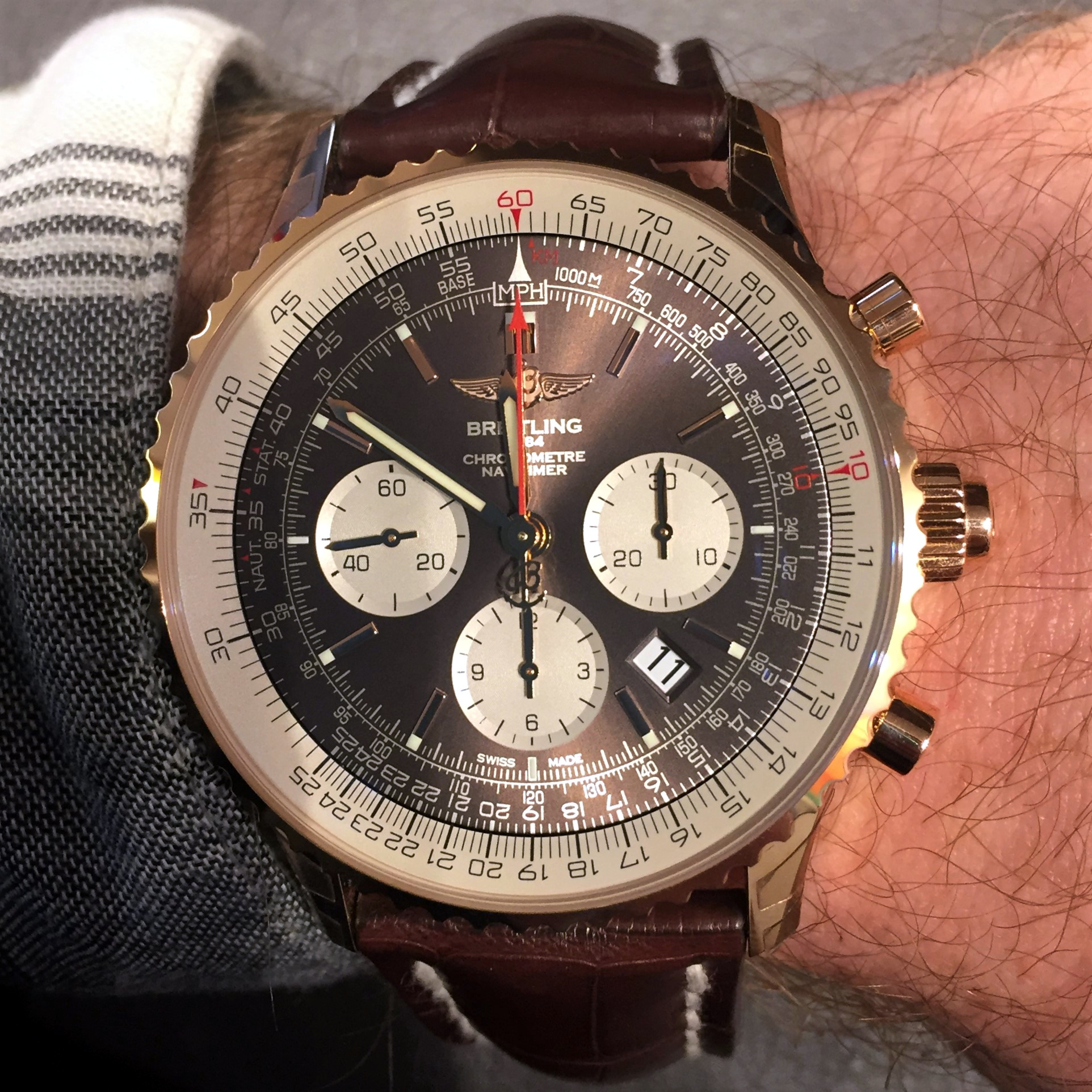
Breitling Navitimer
Oh, and for those of you wondering about the protecting a timepiece during a game of polo – the Jaeger-LeCoultre Reverso introduced the idea of being able to reverse a watch face to hide it in the case during a game, ensuring the face remains unblemished.
Design for the sake of beauty
Not everything wonderful in this world was born of necessity, solving a particular problem or serving a specific purpose. Sometimes, the worlds of art and design and create something for the sake of being able to appreciate inherent beauty. This is where some artists or designers thrive – and the world of horology is no different. We mentioned earlier that some early timepieces incorporated art in the form of enamel dials depicting a scene, carefully crafted by master artisans. Indeed, some high-end manufactures such as Vacheron Constantin, Bovet or Blancpain still create timepieces forged of these styles to this very day.

Blancpain Metier d'Arts dial
During the 1970s we see the birth of some of the most iconic watch designs come to fruition, with two notable examples straight from the mind of the great watch designer Gerald Genta who was inspired from some unlikely sources. The most obvious examples are the 1970 Audemars Piguet Royal Oak (1970), and Patek Philippe Nautilus (1974). Legend has it that Genta designed the Royal Oak in a single night, inspired by the design of an old fashioned diver’s helmet affixed to the diver’s suit by 8 screws. This octagonal design has become beyond iconic, and remains the cornerstone of Audemars Piguet’s catalogue to this very day. With the Nautilus, Genta’s design was inspired by the shape of a yacht porthole, specifically inspired by Patek Philippe owners the Stern family’s love for yachting. Each of these watches also incorporated an integrated strap, forging what went on to become the ‘luxury sports watch’ genre.
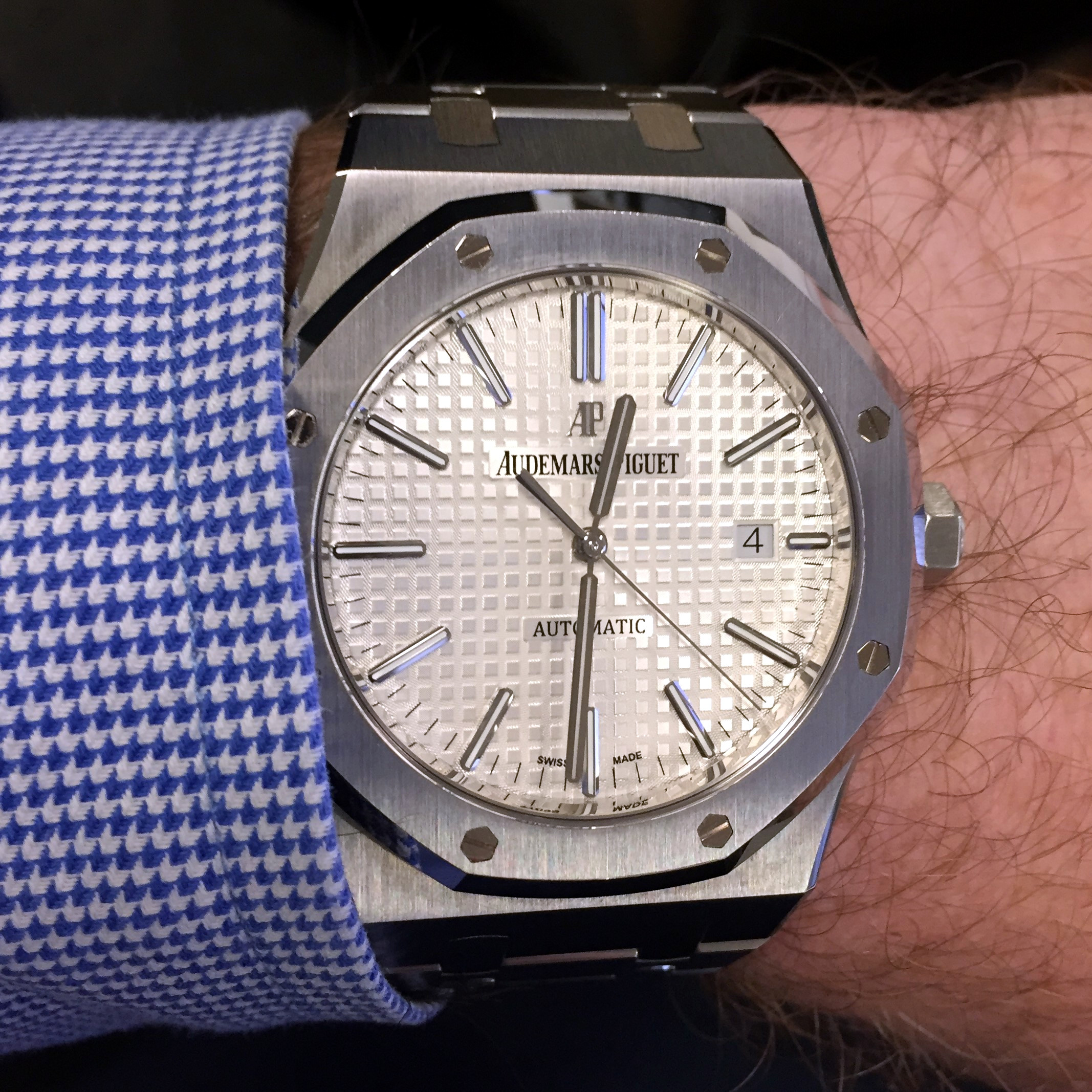
Audemars Piguet Royal Oak
Notably, the humble porthole also served as the inspiration behind Hublot’s famous and modern classic design of the Big Bang (interestingly hublot is even the French word for ‘porthole’).
In these instances, we can therefore point to two seemingly completely unrelated objects in old fashioned diving helmets and portholes as having inspired two of the most iconic watch designs, which in turn went on to inspire one of – if not, the – most popular watch genres of the modern era, and another watch design which went on to form the basis for an entire brand in Hublot. Not quite what you might have thought!
In a previous blog post, we explored the relationship between watches and cars, and having already seen here how some watch designs have been inspired by the nautical world, let’s take a look at some examples of how aircraft have inspired watch designs.
Immediately, there are two modern manufacturers which are synonymous with having actively sought to be inspired by aircraft in their watch designs: Bell & Ross and Bremont. Of course there are a multitude of others as well, however these are two of our personal favourites.
Bell & Ross introduced their BR-01 in 2005 to aplomb, a square faced watch inspired simply by the dials found in an aircraft cockpit. It was an instant hit with the aviation world, with it’s large face and dial, highly legible design with contrasting black and white colour palette, making it ideal for adorning the wrists of pilots and aviation enthusiasts around the world.
With Bremont, there is a clear affinity with the world of aviation, born of owners Nick and Giles English and their passion for all things aviation. The brothers regularly source their inspiration from the history of aviation, and they love to incorporate physical pieces of history in parts of the aircraft themselves into special, limited edition timepieces. Over the years this has included the Wright Flyer, the Supersonic collection celebrating Concorde, and recently the H-4 Hercules limited edition celebrating Howard Hughes’ Spruce Goose.
With the Supersonic, Bremont produced 3 references in stainless steel, rose and white gold. Each reference incorporated a ring of aluminium from Concorde engine components, a manual-wind calibre with the silhouette of the famous aircraft, and with the stainless steel model a leather strap made from the same blue leather from manufacturer Connolly which the seats on Concorde were made from. With Bremont’s design, the devil is always very much in the detail, and well inspired by historical moments.
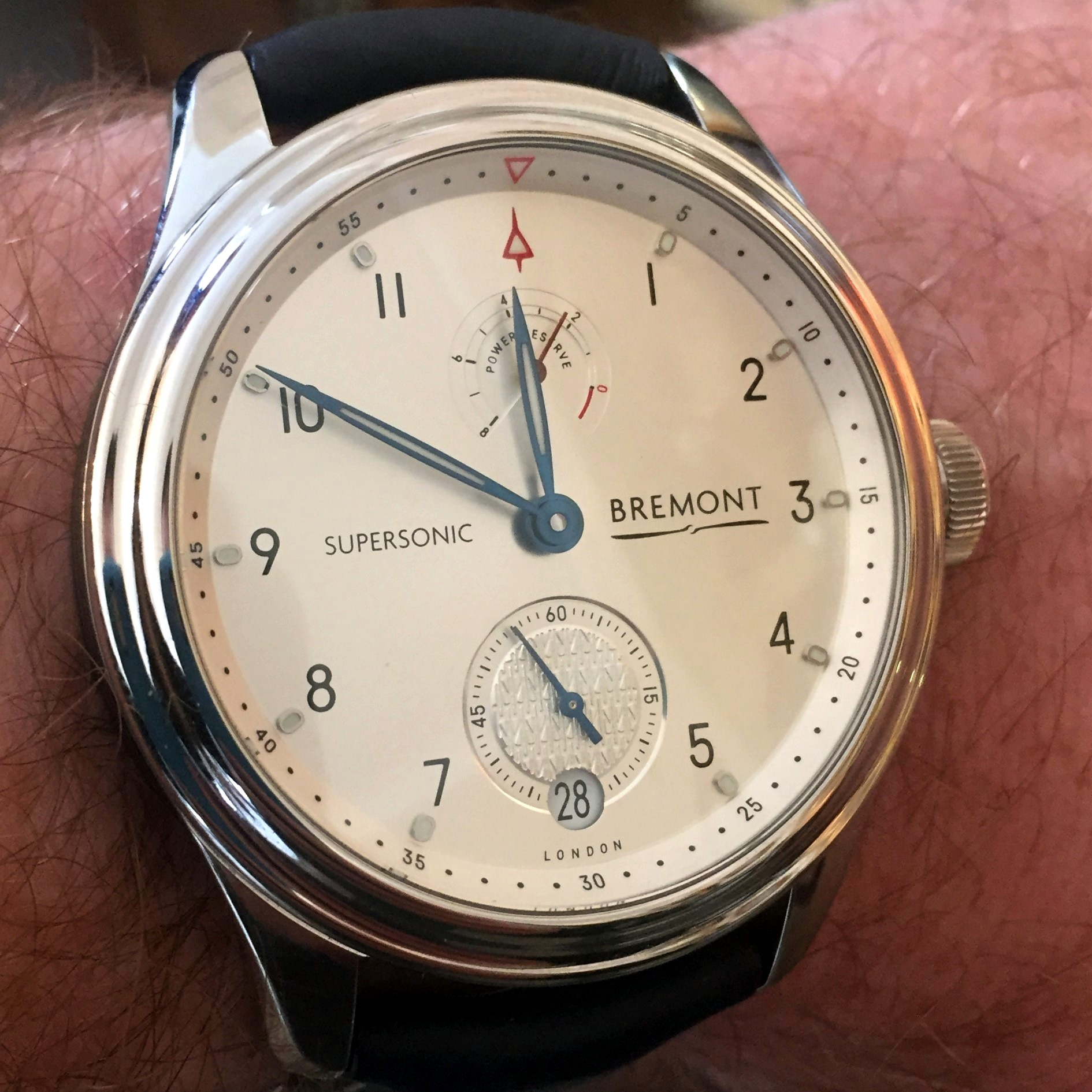
Bremont Supersonic in stainless steel
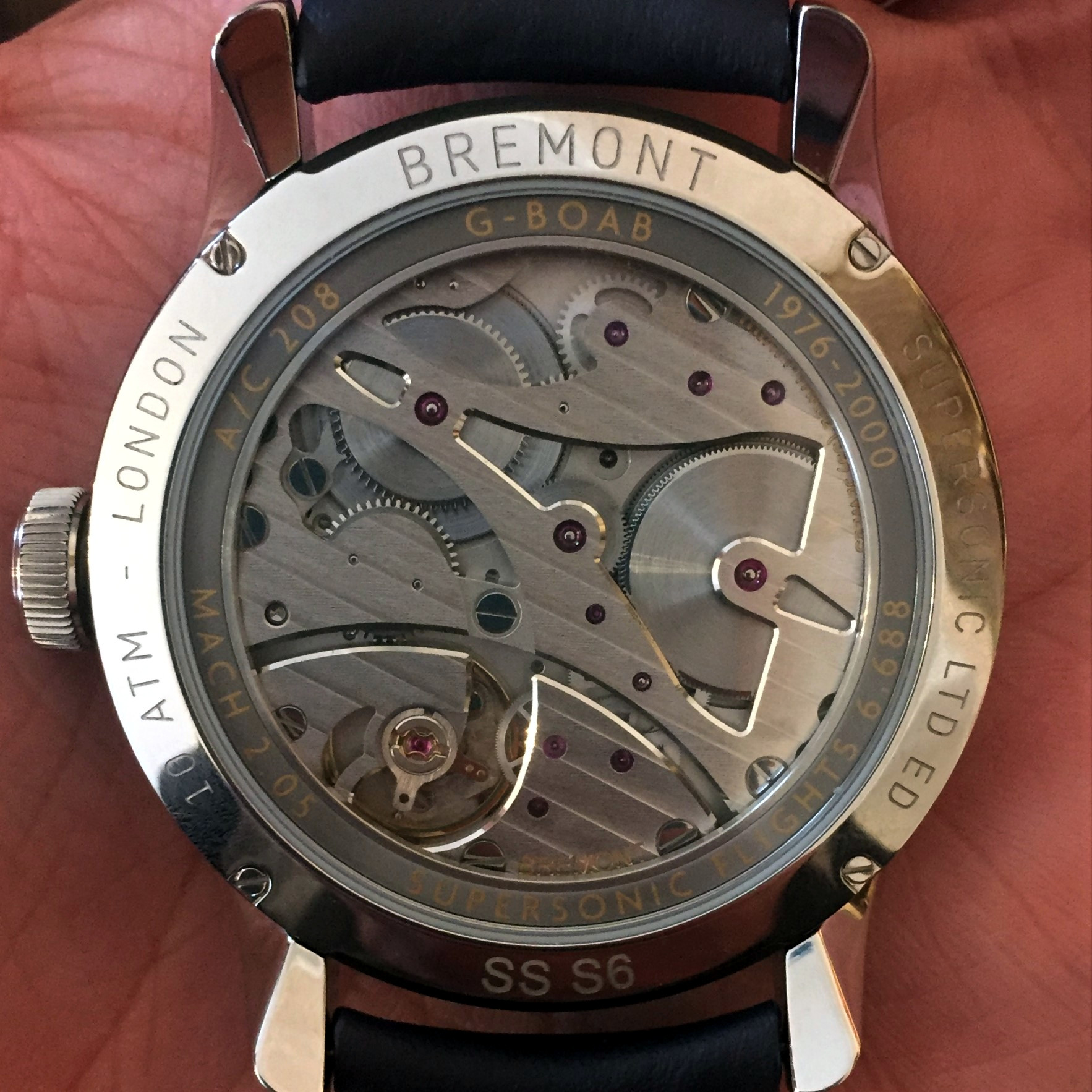
Bremont Supersonic caseback
But what about other sources of inspiration?
Of course design is not always about sticking within the conventional norms. Inspiration can, after all, strike at any time in any place – so why not embrace it!?
Any time? OK, so not ‘any time’ as the term normally means, but we are exploring creativity in this post so let’s be creative with how we do so! Designers regularly look back into the archives of yesteryear for inspiration, and you can see numerous examples of this from recent years with reinterpretations of older or vintage styles. Recently, Chopard took a look at their archives and sought inspiration from the St. Moritz, a luxury sports watch (the genre inspired by the Royal Oak and Nautilus) designed by Karl-Friedrich Scheufele – the son of the owner of Chopard – which was produced from 1980-1995. This original design has been peppered with some inspiration from, as the name might suggest, an eagle with the dial design inspired by the eye of an eagle, and the second hand decorated with a feather.

Chopard Alpine Eagle
Any place? Well, let’s not make this easy. What about the natural world and the deep blue sea… a jellyfish? Cue Max Büsser: spectacularly inventive watchmaker behind MB&F, a brand which continually plays with the boundaries of conventional watch design. In 2017, MB&F released Horological Machine 7 (The Aquapod), which is inspired by the form of a jellyfish.
The circular design of the timepiece is symmetrical, incorporating two winding crowns with one either side, and showcases a tourbillon in the centre of the dial with the dials added around the outside of the tourbillon, which serves to create a sense of concentric circles. The unconventional design works to create a really unique style, and once you know the source of inspiration, you can absolutely equate the two together.
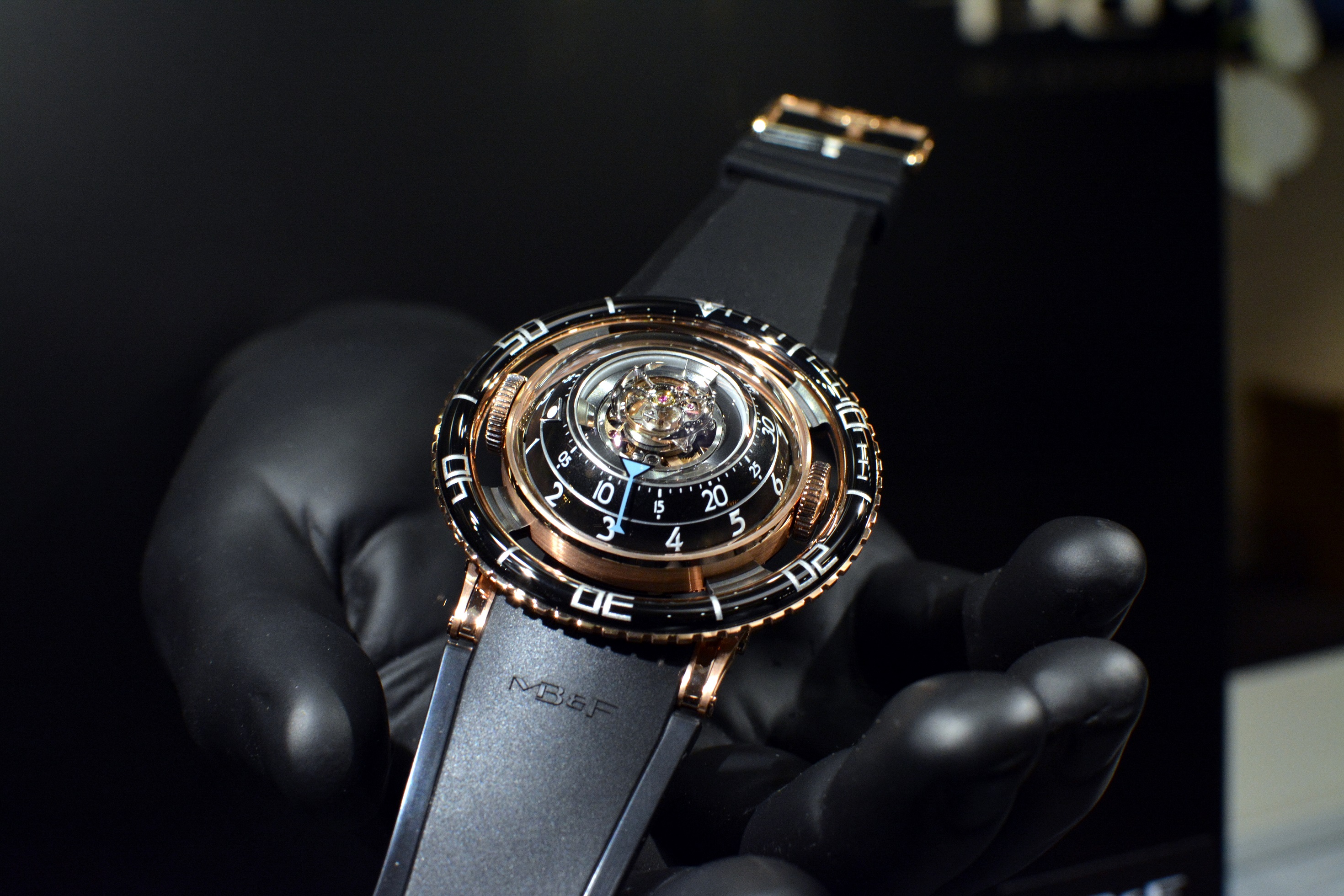
MB&F HM7 Aquapod
As you can see, there really is no end to the what inspires watch designs; anything can serve to inspire us in all walks of life, and watch designers are no different. There are of course timeless designs which will always work well, but there is a lot to be said for those who actively seek to push the boundaries with unconventional designs which are a little different.
The legend of King Arthur and the Knights of the Round Table inspired manufacturer Roger Dubuis to create their limited edition Knights of the Round Table timepieces; in turn, Roger Dubuis’ Knights of the Round Table timepieces inspired Watch Affinity.
To conclude, you never know what seemingly unrelated things might serve to inspire, and what these in turn might lead to…
For any questions, please get in touch via our Contact page, or via our Instagram.
You might also be interested in:
- In Conversation with Max Büsser
- Spotlight: Blancpain Fifty Fathoms
- In Conversation with Vianney Halter
- Watch Stationery and Gift Ideas
- Watch Books, Watch Boxes and more at the Watch Affinity Shop on Amazon (commissions earned)
As an Amazon Associate, I earn from qualifying purchases – thank you for your support

